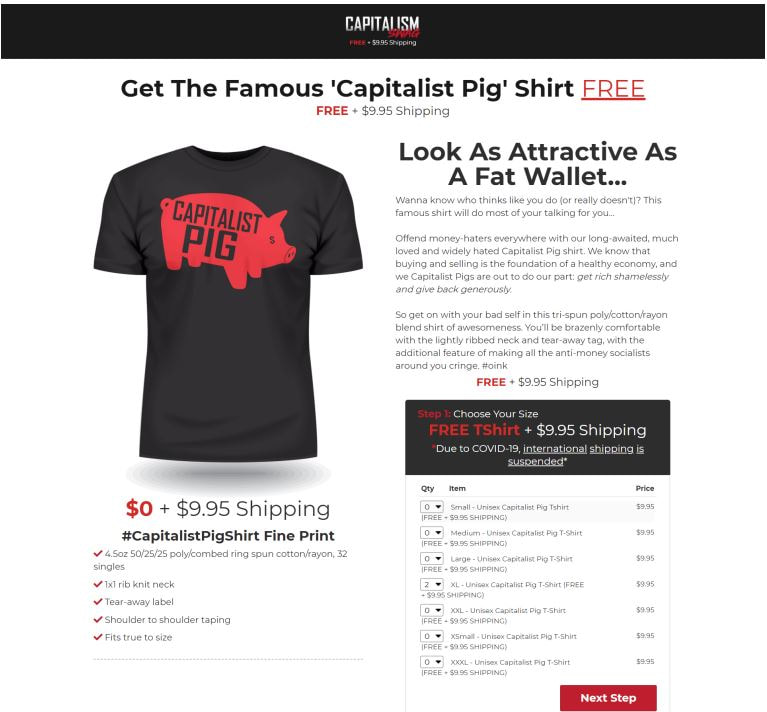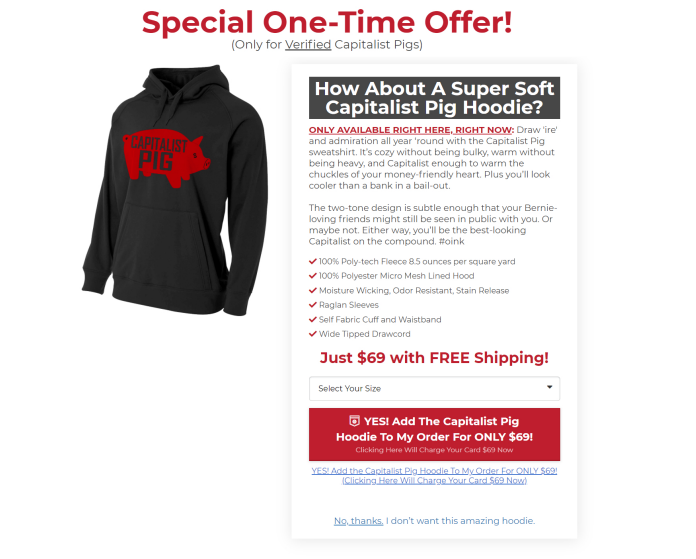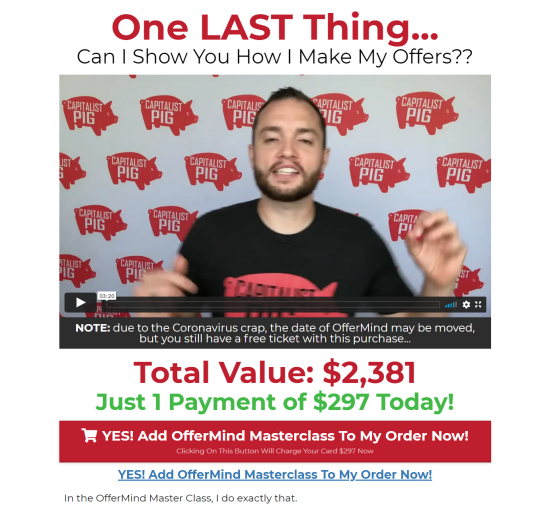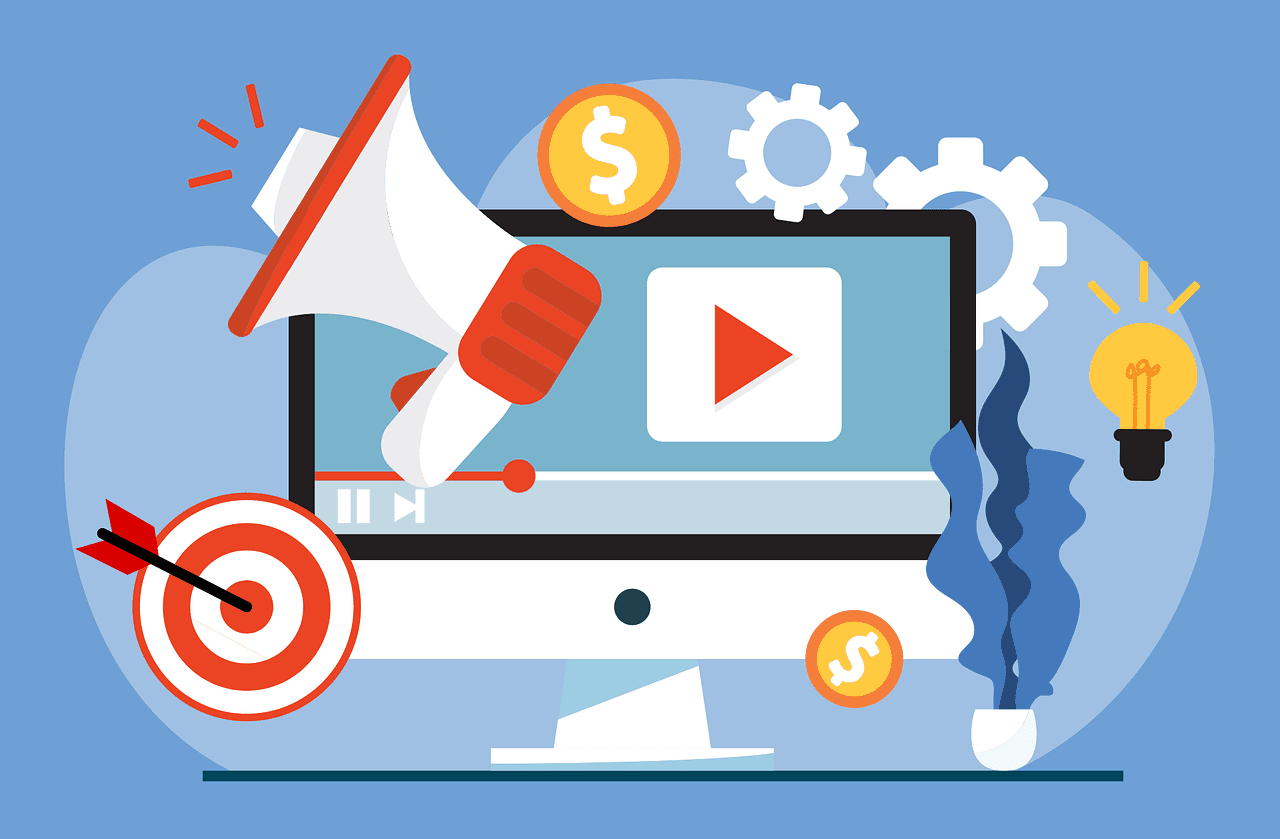What is a lead generation funnel?
A lead generation funnel is a type of front end sales funnel designed and optimized for attracting, qualifying and collecting leads for a business.
Lead generation funnels are front end funnels, which sit at the front of a value ladder.
Most of them use a freebie (called lead magnet) to ‘magnetically’ attract dream customers into the business.
The lead magnet essentially acts as bait to catch the attention of visitors and provide enough value for them to exchange their contact information for it.
What are the benefits of a lead generation funnel?
Lead generation funnels have a handful of benefits.
The first being that they provide a consistent and systemized way to bring new people into your business.
Many businesses out there don’t actually have a consistent way to get leads.
They’ll try one thing, get a few leads and then move on to something else.
Always looking for a new way to get customers.
A lead generation funnel gives business owners a way to attract quality leads into their business, almost on autopilot.
Another benefit of lead gen funnels is that many of them also can make sales to help pay for the cost of advertising.
One lead funnel like this is a Self-Liquidating Offer (SLO) Funnel.
In this sales funnel, after a visitor opts-in on the squeeze page, they are taken to a sales page for a $25-$97 product.
If they decide to buy the product, they also see 2 upsell offers at higher price points.
Ideally, if your SLO funnel is fully optimized, you can make a profit bringing new leads in…
AND that’s without offering them your core product!
From there an email follow up sequence can ascend those leads up the value ladder to higher & higher priced products, improving Lifetime Value.
Lead funnel example
There is a wide range in the styles of lead funnels people like to use.
They can vary from a simple 2 page funnel with a squeeze page and a thank you page…
All of the way to a full blown self-liquidating offer funnel with multiple upsells & downsells.
And everything in between.
Here’s an example of a Free Plus Shipping Funnel being used as a lead generation funnel:
This funnel starts by offering a free t-shirt if the visitor pays for the shipping cost.

On that same first page, before someone clicks the button to submit the order, there is an order form bump.
This is basically a pre-purchase upsell that helps to increase the Average Order Value in the funnel.
In this funnel it’s a hat with the same logo as the shirt.
One of the things that made this order bump so successful is it’s a product that is only available in this funnel.
You can’t buy it ANYWHERE else, adding an element of scarcity baked into the offer.

After someone submits that first page, they are immediately taken to an upsell page that offers a hoodie with the same logo.
Again, this hoodie is literally only available in this sales funnel…
There is no other way for someone to get this hoodie, making it a one-time offer.
That scarcity helps increase conversion rates.
The upsell page is very short and to the point, it’s not a long drawn out sales page.
It is also a one-click upsell.
Which means that buyers only have to click the yes button, instead of re-entering all of their contact information.

Finally, after the first upsell, there is a second upsell.
This last upsell is a digital product and is priced higher than all the other offers in the funnel combined.
Having a higher priced upsell like this at the end of the funnel doesn’t necessarily increase conversion rates…
But it does boost profit margins.
Because it’s a digital product, there isn’t much cost to fulfill the product, so it’s almost ALL profit.
So even if only a handful of people convert, it will help this lead funnel break even on ad spend.

There’s a quick walk through of a lead gen funnel example.
Hopefully, that helps you understand lead funnels a little bit better!
Lead gen funnel software
When it comes to software for building a lead generation funnel, you can use pretty much any sales funnel builder out there.
If you already have a website, you can try to custom code a sales funnel in there…
But to get all of the features into your lead gen funnel, it will be a real pain.
There are a handful of popular sales funnel software out there and they all have their pro’s and con’s based on where you are in business.
If you want the overall best funnel software, regardless of price, then ClickFunnels is the way to go.
It is the original sales funnel building software and is still the best, especially if you already have an established business.
The only downside is ClickFunnels can be pricier than other sales funnel building software.
If you’re just starting out and don’t want to spend the money to use the best sales funnel software, another good option is systeme.io
This funnel builder has a free plan that can get you started.
Also, its actual funnel building interface is similar to ClickFunnels and it has enough of the same features to make most funnels work.
It doesn’t have as many templates and doesn’t have as much marketing education as ClickFunnels, but it can get your funnel put together.
Another option for a sales funnel building software is groove.cm
This is often called groove funnels, because it breaks all of its features up as different “products”…
One of them being groove funnels for building sales funnels.
Groove has a free plan, but its free plan doesn’t have as many features as Systeme’s free plan in my opinion.
But Groove does have multiple paid plans that are more useful than Systeme’s.
I have reviews and tutorials on all of these funnel building software so you look through them and see which one will work best for where your business is now.
How To Build a Lead Generation Funnel
Step #1: Make your plan
The first thing you have to do before you dig into building your lead gen sales funnel is to decide what you’re going to do with the leads and how you want to introduce them to your business.
Are you wanting to run ads?
Do you need to cover your ad costs?
Do you only have a core product, so your lead funnel can only be a squeeze page & thank you page?
Step #2: Choose Your Target Audience
Once you know how you’re wanting to use your lead generation funnel, you need to figure out WHO you want to bring into your business.
If you’re a newer business, you’re probably only going to have 1 dream customer persona, so that’ll be your target audience.
Some bigger businesses might have multiple different dream customer personas, so in that case, you’ll need to pick ONE of them.
Picking your target audience isn’t just about who you target with your ads, it affects everything you do throughout your funnel.
It is especially important in your sales copy and messaging.
From your ads, to your sales funnel and you follow up emails…
All of it is affected by who your target audience is.
Step #3: Find a problem you can solve
Now that you’ve nailed down who you’re going to be targeting, you need to find a problem you can solve for them.
Everyone has problems they need solved and there’s many problems people are willing to pay to have solved.
Solving a problem for your target audience is how you can provide value to them.
The biggest problem you can solve for them is going to be solved by your core product, but there are other things you can solve or other ways you can solve it before your core product.
That’s where your lead magnet comes in
Step #4: Brainstorm lead magnet ideas
Once you have a problem or set of problems you’re looking to solve for your target audience, you need to brainstorm different ways you can create a lead magnet around it.
Ultimately the goal of your lead magnet is to attract your target audience and ONLY your target audience.
The team over a Digital Marketer likes to use the “but no one else would” framework.
In this framework you focus on things that only the true die-hard fans would know but no one else would.
Here’s an example:
If you were talking about golf and wanted your messaging to be super dialed into die-hard golfers, then you wouldn’t talk about Tiger Woods.
Everyone knows who Tiger Woods is, even non-golfers.
But if you talk about Matt kuchar or Dustin Johnson, only die-hard golf fans are going to know who you’re talking about.
Now you can change the wording a little bit to make it fit your lead magnet…
Like [Target Audience] would need _____, but no one else would.
Does that make sense?
Your lead magnet can be pretty much anything that your target audience sees as valuable.
Some common examples are: eBooks, free trainings, checklists, mini-courses, quick start guides, resource lists, and even templates.
Pretty much if you can deliver it and your target audience finds it valuable, it can be a lead magnet.
Step #5: Create a Lead Magnet
Now that you know what your lead magnet is, you need to make it.
Depending on what your lead magnet is, this can take you a while…
Or you can finish it in an hour.
If your lead magnet is going to be something that is a pdf you can have it designed by someone on fiverr or you can even just make it yourself in something like Canva.
Canva is where I make most of my lead magnets because it has a super simple drag and drop editor.
There’s also hundreds of templates you can use in Canva as well to speed up the process.
Here’s a quick tutorial on how to use it:
Step #6: Build Your Funnel
Next you need to decide what type of lead funnel you’re going to use & build it.
A few common types of funnels used as lead gen funnels are;
Self-Liquidating Offer Funnel
Free Plus Shipping Funnel
Squeeze Page Funnel
With the Free + Shipping funnel, the free product you’re giving away acts as your lead magnet so it’s a little different than the other 2.
But both the SLO Funnel and the squeeze page funnel use a traditional lead magnet.
If you want to know more about each funnel I have separate articles on each that dig a little deeper.
Also, here’s a tutorial so you can see the actual funnel building process inside of a funnel building software.
Step #7: Write a follow up/nurture email sequence
Once you have your lead gen funnel built, you’ll need to write out 2 different email follow up sequences.
The first one is to deliver the lead magnet and re-offer the first product in your funnel (if you have one)
Having a simple follow up sequence like this can be a simple way to get a boost in conversions from leads you already have.
The second email sequence you’ll need is a nurture sequence.
This is an email sequence that continues to build a relationship with your leads and customers after they’ve been through your funnel.
Your nurture sequence can also segment your audience into different groups based on which emails they respond to.
Having different segments in your email list lets you make offers to the people who are most likely to buy a given product.
Step #8: Launch Your Funnel
IT’S FINALLY HERE!
You have everything for your lead funnel put together, now it’s time to launch it.
There’s plenty of different ways you can go about launching your funnel…
If you already have an existing email list you can launch your funnel to your list…
You can add a link to your lead magnet on your blog if you have one…
Or if you don’t have any assets you can just flat out run ads to your landing page.
However you decide to do it, you’re going to need traffic.
Step #9: Adapt, Adjust, & Overcome
Once you have visitors coming into your funnel, it’s time to start analyzing.
No matter how well you know your target audience or how good you are at building sales funnels…
No funnel is ever going to be perfect when it launches.
Even the best funnel builders and copywriters in the world have to split test their funnels and make adjustments as they go.
This is one of the most important steps in getting your funnel up and running!
Tweaking your funnel, from headlines to what images are placed where, is how you optimize your funnel to an automated lead machine.
And even once you think you have it dialed in, you should always keep A/B testing parts of it to see if you can make even slight improvements in conversion rate.



